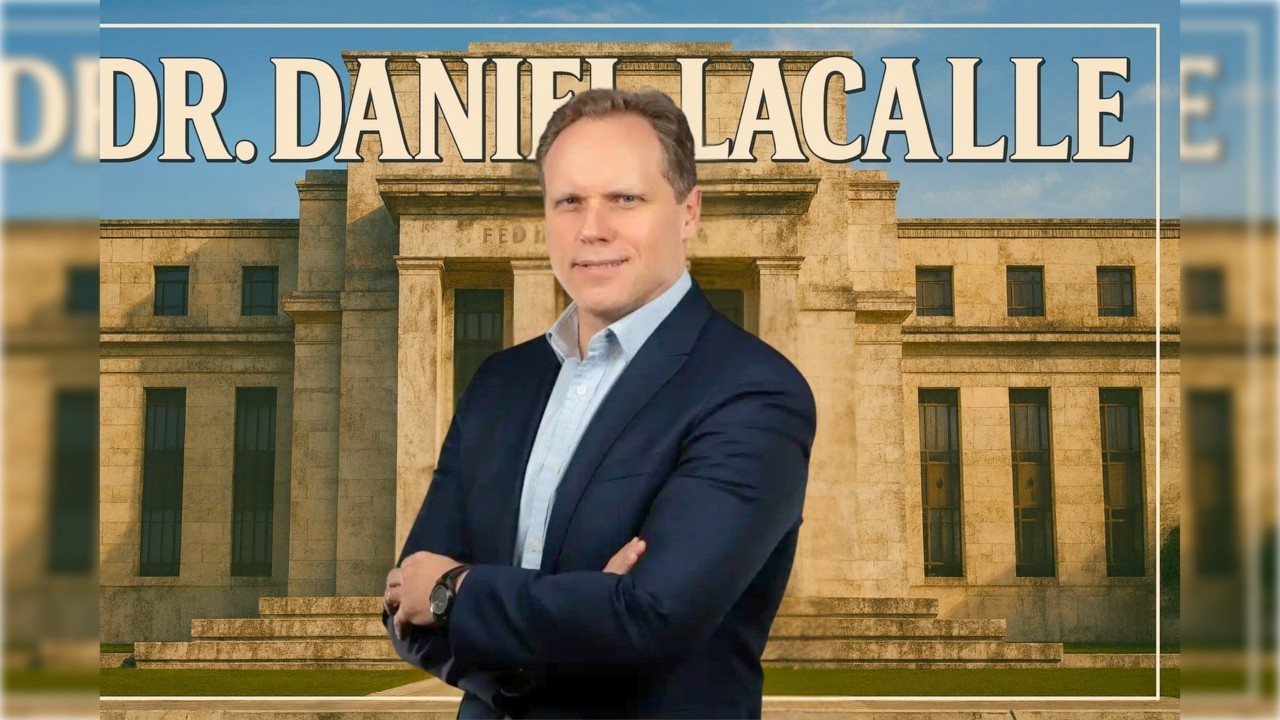(Money Metals News Service) In a recent episode of the Money Metals podcast, host Mike Maharrey sat down with Spanish economist Dr. Daniel Lacalle.
The two explored the Federal Reserve’s role in driving inflation, the global sovereign debt bubble, and the implications for gold and silver investors.
(Interview Starts Around 6:30 Mark)
Who Is Dr. Daniel Lacalle?
Daniel Lacalle is widely recognized as one of Europe’s most prominent free-market economists.
He is the Chief Economist at Tressis, a fund manager with decades of experience in international capital markets, and a professor of global economics at IE Business School in Madrid.
Lacalle is the author of several books, including Life in the Financial Markets, Freedom or Equality, and Escape from the Central Bank Trap. His writings frequently appear in global outlets such as CNBC, The Wall Street Journal, and The Financial Times.
His background in energy markets, sovereign debt, and monetary policy gives him a unique vantage point on the forces shaping today’s economy.
Known for his Austrian-school approach, Lacalle has consistently warned about the dangers of central bank intervention, government overspending, and the long-term consequences of sovereign debt.
With a global audience that follows his commentary across X, YouTube, LinkedIn, and his website, he has become a leading voice on monetary policy, inflation, and precious metals as safe-haven assets.
The Fed’s Role in Inflation
Lacalle argued that the inflation crisis of 2021 through 2023 was not the result of tariffs or supply chain disruptions, as many policymakers claimed.
Instead, it was the direct outcome of the Federal Reserve monetizing extraordinary levels of government spending.
He pointed out that the Biden administration increased spending by two trillion dollars beyond the already unprecedented COVID programs.
The Fed facilitated this excess through aggressive money supply expansion. Combined with the surge in money velocity during lockdowns, the result was a wave of inflation that continues to linger.
Although the Fed initially dismissed inflation as transitory, it later blamed global supply chains and the war in Ukraine. Lacalle insisted that the central bank itself was the primary culprit.
Interest Rate Manipulation and Credit Squeeze
The discussion turned to interest rates, where Lacalle emphasized that the Federal Reserve should not manipulate them at all.
He noted that when rates are set by policy rather than markets, distortions inevitably follow.
Small and medium enterprises are finding it almost impossible to obtain credit, not just at higher prices but at all, as banks prefer to hoard treasuries.
With the ten-year Treasury yielding around 4.10 percent, the incentive to lend to productive businesses is crushed.
The result is crowding out of the private sector and weaker job creation. Lacalle argued these consequences could be avoided if interest rates were allowed to float freely.
Gold, Silver, and Central Bank Policy
For investors in precious metals, Lacalle painted a picture of strong tailwinds ahead.
Central banks around the world continue to inject liquidity to sustain the sovereign debt bubble, whether in Japan, the UK, or the Eurozone.
In this environment, he noted, gold is essentially free money.
Today, central banks hold less than 17 percent of their assets in gold. If they were forced to double that allocation, the price of gold would inevitably rise.
Silver, closely tied to gold, would move higher as well. Both metals, he argued, reflect the ongoing destruction of currency purchasing power.
The Hidden Costs of Government Debt
Lacalle explained that government debt is not some abstract issue with little bearing on everyday life.
High levels of debt translate directly into slower productivity growth and weaker real wage gains.
Private borrowers are crowded out as banks favor lending to governments, while ordinary citizens struggle with rising real asset prices in housing markets.
At the same time, real wages lag behind.
Elevated debt ultimately means higher taxes, higher inflation, or both.
Lacalle concluded that this is why people feel poorer even when headline economic indicators suggest stability.
Why There Won’t Be Another “2008”
When asked about the possibility of another crisis like those of 2008 or 2011, Lacalle argued that governments and central banks will not allow such events.
Instead of abrupt collapses, he described a slow-motion implosion of sovereign debt.
By inflating spending and maintaining high levels of liquidity, policymakers prevent the system from seizing up.
But the price is persistent inflation and stagnation.
Rather than a sudden crash, the world faces a gradual erosion of purchasing power and living standards.
Lacalle compared this to covering dirt with even more dirt, avoiding cleanup while allowing problems to fester.
Malinvestment and Distortions
Lacalle warned that manipulated rates encourage malinvestment on a grand scale.
Capital flows disproportionately into overcrowded sectors such as real estate or speculative technology.
Long-term projects with modest returns, like infrastructure, are neglected.
Without market-driven interest rates, the early warning signs of bubbles are obscured.
Mike Maharrey compared interest rates to road signs that orient investors. When those signs are removed, markets get lost.
Lacalle extended the analogy further. He argued that central banks not only remove the signs but replace them with misleading ones, directing investors down dangerous paths.
In his view, true market rates would expose weaknesses quickly and prevent bubbles from swelling to dangerous levels.
Conclusion
The conversation closed with a reminder that the distortions created by central banks and sovereign debt policies are already reshaping the global economy.
For holders of gold and silver, these dynamics strengthen the case for owning tangible assets that hold value when currencies erode.
Listeners interested in following Lacalle’s work can find his articles and commentary at dlacalle.com/en.
He also shares regular insights through his YouTube channel (in English or Spanish), X account, and LinkedIn profile.

